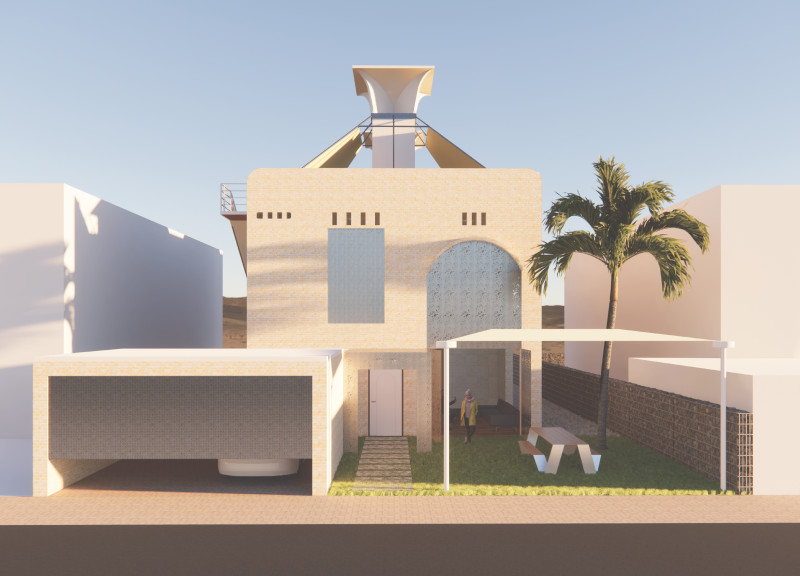5 key facts about this project
The project represents a thoughtful approach to contemporary architecture, focusing on the importance of sustainable design practices alongside the creation of livable spaces. It functions primarily as [insert function, e.g., a mixed-use development, community center, residential building], catering to a diverse demographic and encouraging an adaptive lifestyle. The form of the structure navigates the local climate and responds to the surrounding landscape, emphasizing an architecture that supports harmony with nature.
Key components of this design include the deliberate use of materials, spatial organization, and innovative features that enhance both usability and visual interest. When examining the material palette, the project showcases a careful selection of concrete, wood, glass, steel, and stone. Each material is chosen not only for its physical properties but also for its ability to contribute to the overall sustainability of the design. The concrete framework provides durable structural integrity, while the use of wood and stone infuses warmth and a sense of place. Expansive glass elements invite natural light into the spaces, bridging the indoors with the outdoors and promoting a connection with the natural environment.
A notable aspect of the design is its sensitivity to spatial flow. The architects have skillfully organized the internal and external spaces to enhance user experience, balancing private areas with communal spaces that encourage interaction. The layout thoughtfully guides inhabitants and visitors through various zones, each serving distinct functions without compromising on the sense of openness and accessibility. This spatial organization reflects a commitment to fostering community engagement and interaction.
Unique design approaches are evident throughout the project. The integration of sustainable technologies, such as green roofs and rainwater harvesting systems, demonstrates a forward-thinking ethos that prioritizes environmental responsibility. These elements not only contribute to the building's ecological footprint but also serve as educational components for occupants and visitors, illustrating the benefits of sustainable living practices.
The architectural form itself exhibits a contemporary language that respects the local context. Its silhouette harmonizes with the surrounding landscape, utilizing natural topography to enhance visual cohesion. Such design choices reflect an understanding of how architecture can enhance rather than disrupt the environment.
This project invites observers and users alike to engage with its spaces, encouraging exploration and appreciation of the balance between form and function. By examining elements like architectural plans and sections, one can gain deeper insights into the intentions behind the design decisions made throughout the project. Furthermore, exploring various architectural designs and ideas within the overall framework reveals how contemporary architecture can effectively respond to human needs while respecting ecological and cultural contexts.
For those interested in delving deeper into this project, a presentation of the architectural details, including plans and sections, captures the full scope of the design and highlights the meaningful choices made to create a cohesive and engaging environment. This exploration not only enriches the understanding of the architecture but also emphasizes the importance of thoughtful design in fostering community connections.


























